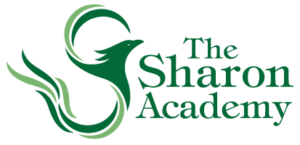Principles of Personalized Proficiency
PRINCIPLES of
PERSONALIZED, PROFICIENCY-BASED
TEACHING and LEARNING
Principle #1: All students can and will learn when they feel included, respected and valued by their learning community. *
- Students are known as individuals and learners, and they are supported in developing positive relationships with each other and with adults in the learning community.
- The curriculum, classrooms, and structures of the school recognize and honor student identities and interests.
- Interventions, extensions of learning, and opportunities to revise and relearn are systemic and provided regularly so that all students achieve common outcomes:
- I can Acquire Information Critically (ACQUIRE)
- I can Think Critically and use Evidence to Construct Arguments (REASON)
- I can Demonstrate Perseverance and Creativity in Problem Solving (DESIGN)
- I can Communicate Effectively (COMMUNICATE)
- I can Take Responsibility for Learning and Growth (SELF-DIRECT)
- I can Commit to Community and Responsible Citizenship (ENGAGE)
- I can Explore Social, Emotional, and Physical Well-being (SUSTAIN)
TSA’s Essential Transferrable Skills and Rubrics
Principle #2: Student learning is enhanced by clear cycles of practice, feedback, assessment, and reflection.
- All forms of assessment are aligned to standards, which are skills or content areas that students work towards becoming proficient in throughout a course or division.
i. Algebra 2 Content: Reasoning with equations and inequalities.
ii. Algebra 2 Skill: Attend to precision.
iii. Algebra 2 Skill: Make sense of problems and persevere in solving them. - Habits of work (like attendance, class participation, homework completion, timeliness) are also standards, but they are assessed and reported separately from academic knowledge and skills.
- The continual use of formative assessment (or practice) provides opportunities for students to practice, self-assess, and give and receive feedback on their progress towards meeting the standards.
Example of Formative work – Algebra 2 – Equations Practice. This is practice, it is meant to prepare students for the summative assessments. Students’ scores are meant as feedback and have little impact on their score for the standards. - Summative assessments, evaluated against common scoring criteria (a rubric), are used to evaluate a student’s level of achievement on standards at a given point in time.
Example of Summative work – Algebra 2 – Equations Quiz (this will assess both the content standard of reasoning with equations and inequalities AND the skill standard of attending to precision.) - All forms of feedback (including grades) are used to adjust instruction and learning, to inform academic interventions, and to identify extensions of learning.
- Students regularly reflect on their learning progress and are taught to evaluate and use feedback.
Principle #3: Students are empowered and engaged by choice in their learning experiences.
- All learning pathways (courses, internships, dual enrollment, independent studies, etc.) are aligned to a common set of competencies.
- Learning in different ways and at varied paces is expected and planned for in all settings, requiring differentiation, student choice, and personalized learning options to meet common outcomes.
- Students make important decisions about their learning experiences and how they will demonstrate their knowledge and skills.
* Some of this language is taken directly from the Great Schools Partnership website. Some of it has been altered to more accurately reflect The Sharon Academy’s implementation of personalized proficiency.
